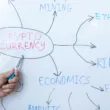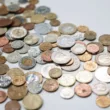The coming of a decentralized, blockchain-based internet with Web3.0 in the offing has defined a gamble posed toward a defined major change in the digital world. It is the undercurrent of this graduating transition to Non-Fungible Tokens (NFTs), which from now on is about to redefine digital ownership along with the value and authenticity of the tokenized asset. This paper will provide the definition of NFTs, how NFTs have hailed digital ownership and assets in the Web3.0 era, and how their implication is going to be for the futures of digital interactions and transactions.
Getting a Handle on NFTs
Non-fungible tokens (NFTs) are unique, one-of-a-kind digital assets that cannot be exchanged on a one-to-one basis; hence, they are provable in authenticity using the same blockchain. Unlike fungible cryptocurrencies such as Bitcoin or Ethereum, for instance, and the likes of them, which practically stand in for one another in value terms, so as to be exchangeable at this one-for-that-one ratio, NFTs are unique. This nature of uniqueness has been used to implement NFTs in tokenizing physical assets and reflecting ownership of non-tangible digital goods, such as works of art, music, films, and more.
Digital Ownership’s Ascent
Adding to the above, blockchain technology introduced some groundbreaking changes to the digital ownership arena, introducing an all-new way of purchasing, selling, and exchanging digital assets in such a manner that they continue to be legitimate and prove their provenance. This is being most keenly felt where NFTs have most taken off: in the art world, where they enable artists to finally earn money from digital works courtesy of smart contracts that give them a cut of any future sales—something that was never the case with normal digital files.
Beyond Art: Broadening the Scope of NFTs
While the NFT attention seemed wearable by digital art, most of the NFT spotlight has been shining upon digital art.
Collectible Tokens: A standard digital version of a physical item, which functions as a form of collectible. Such kinds of digital collectibles may be in the form of virtual shoes and trading cards.
The music and entertainment industries are using NFTs to provide fans with special material, access, and benefits.
Virtual World Real Estate: Recently, there has been an emergence of plots in the metaverse, like Decentraland or The Sandbox, which are sold as NFTs, thereby allowing the buyers to develop virtual experiences on the land they now own.
And of most importance for most players is that NFTs could open up secondary marketplaces where they could purchase and possibly sell rare in-game items and characters.
Real-World Asset Tokenization
In this way, the neural network tokens (NFT) use will bring a breakthrough diffusion of blockchain technology into tangible uses, tokenizing physical property possible. These are the digitized rights of an asset to facilitate transactions, reducing transaction time, enhancing asset liquidity and the number of eyeballs that peek in occasionally, and opening up its investment. Tokenization via NFTs is set to bring in a revolution by increasing transaction efficiencies in a wide array of industries to democratize them, not generic to the knowledge of tokenization in industries beyond the digital space.
Difficulties and Possibilities
There is still a lot of stumbling on the way to NFTs realizing their pinnacle potential. This spans everything from environmental issues to copyright and IP issues, and further to a need for greater public understanding and respect. These apart, NFTs position themselves for:
Enable Creators: By giving them a place to connect with their fans and earn money directly from them.
For a further level of protection, use the blockchain’s immutable ownership and authenticity verification features.
Create Untapped Markets: By streamlining the purchase, sale, and trading of a broader array of assets.
Innovative culture: Advocate for innovative cultures in the interfacing of new ways with technologies and new ideas for inspiring creativity in the launching of new businesses. How NFTs Will Fare in Web3.0 Surely, NFTs become more and more popular in within the digital economy right at the time we dip into the Web3.0 era. The growth in the ecospheres of unity driven by blockchain is only likely to increase further in most of DeFi, social media, and other online ornamental sausage machines.





